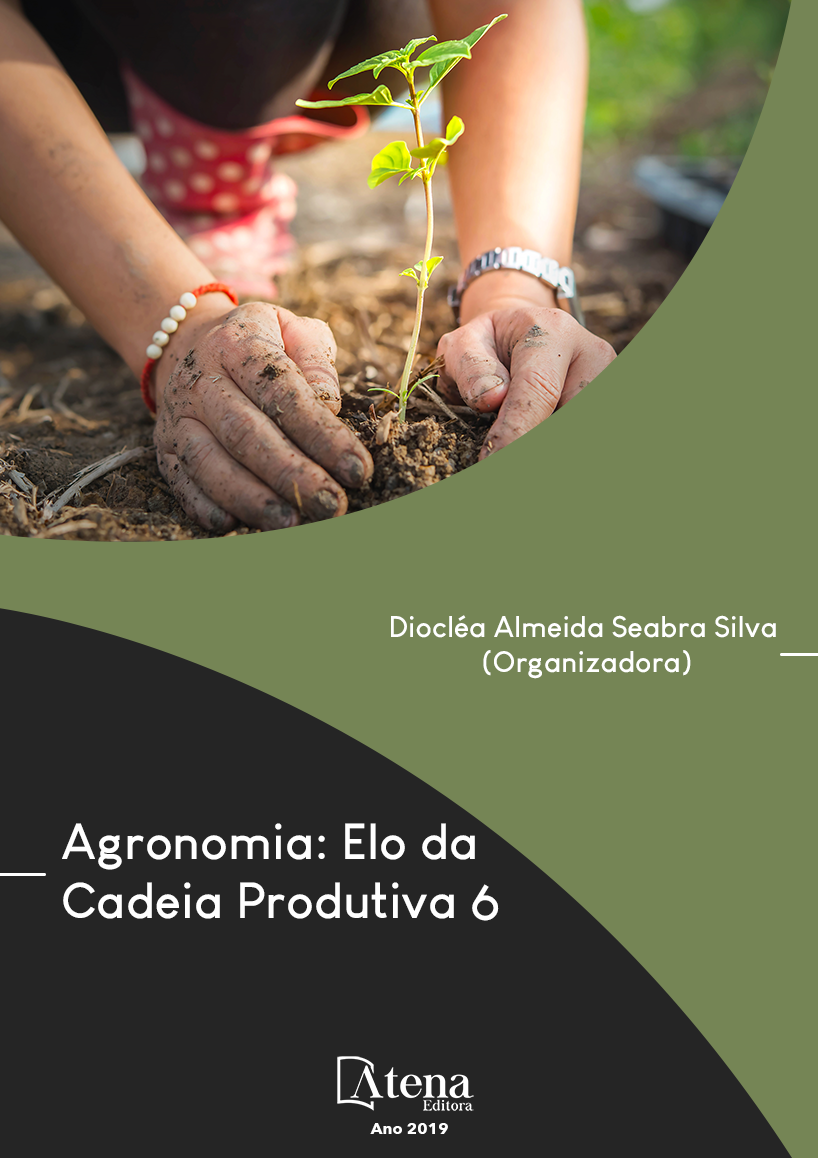
INFLUÊNCIA DE CULTIVAR E DO PERÍODO DE COLHEITA NA PRODUTIVIDADE E NO PADRÃO DE FRUTOS DE MAMOEIROS, INTRODUZIDOS DO ESTADO DO ESPÍRITO SANTO, EM CONDIÇÕES EDAFOCLIMÁTICAS DO AMAZONAS
Com os objetivos de introduzir, avaliar
e identificar cultivares adaptadas às condições
de clima e solo do Estado do Amazonas,
portadoras de elevado potencial produtivo e
de características agronômicas favoráveis à
qualidade, para futuras recomendações aos
produtores, instalou-se um experimento com
quinze cultivares de mamoeiros, espaçamento
de 3,5 m x 2,0 m, em blocos casualizados, quatro
repetições, unidade experimental de 10 plantas
em linha. População de 600 plantas, após
sexagem. O preparo da área e os tratos culturais
seguiram as recomendações de Martins &
Costa (2003), e o plantio no campo foi realizado
no dia 29/04/2009. No dia 25/07/2009, instalouse o sistema de irrigação com fitas gotejadoras.
Foram avaliadas nos períodos jan/fev/mar e
abr/mai/jun, as características Produtividade
Trimestral de Frutos Comerciais, Número
Trimestral de Frutos Comerciais, Produção
Trimestral de Frutos Não-comerciais e, Número
Trimestral de Frutos Não-comerciais. Os dados
médios foram submetidos à análise de variância
usando-se o software PROG GLM, e as médias
das características foram comparadas entre
as cultivares por meio do Teste Scott-Knott.
Realizaram-se também, de maneira ampla, as
análises de correlação entre as produtividades
(pesos) e os números de frutos, para cada uma
das duas categorias (comercial e não-comercial).
A cultivar “Caliman 01” se destacou entre as
quinze cultivares testadas, tanto no primeiro
como no segundo trimestre, apresentando as
maiores produtividades trimestrais de frutos
comerciais, respectivamente, 17,3 t./ha e 19,5
t./ha, nos períodos jan/fev/mar e abr/mai/jun.
INFLUÊNCIA DE CULTIVAR E DO PERÍODO DE COLHEITA NA PRODUTIVIDADE E NO PADRÃO DE FRUTOS DE MAMOEIROS, INTRODUZIDOS DO ESTADO DO ESPÍRITO SANTO, EM CONDIÇÕES EDAFOCLIMÁTICAS DO AMAZONAS
-
DOI: 10.22533/at.ed.2501903126
-
Palavras-chave: variabilidade genética, qualidade, adaptabilidade, Carica papaya.
-
Keywords: genetic variability, quality, adaptability, Carica papaya.
-
Abstract:
With the objectives of introducing, evaluating and identifying cultivars adapted to the conditions of climate and soil of
the state of Amazonas, with high productive potential and agronomic characteristics
favorable to quality, for future recommendations to the producers, an experiment was
installed with fifteen cultivars of papaya trees, spacing of 3.5 m x 2.0 m, in randomized
blocks, four replications, experimental unit of 10 plants in line. Population of 600
plants, after sexing. The preparation of the area and the cultural tracts followed the
recommendations of Martins & Costa (2003), and the planting in the field was carried
out on day 29/04/2009. On day 25/07/2009, the irrigation system was installed with drip
tapes. They were evaluated in the periods jan/feb/mar and apr/mai/jun, the characteristics
quarterly productivity of commercial fruits, quarterly number of commercial fruits,
quarterly production of non-commercial fruits and, quarterly number of non-commercial
fruits. The mean data were subjected to analysis of variance using the software PROG
GLM, and the means of the characteristics were compared among the cultivars through
the Scott-Knott test. The analyses of correlation between yields (weights) and fruit
numbers were also broadly performed for each of the two categories (commercial and
non-commercial). The cultivar Caliman 01 stood out among the fifteen cultivars tested,
both in the first and in the second quarter, presenting the highest quarterly yields of
commercial fruits, respectively, 17.3 t./ha and 19.5 t./ha, in the periods jan/feb/mar and
abr/mai/jun.
-
Número de páginas: 15
- Enilson de Barros Silva
- Scheilla Marina Bragança
- Lucio Pereira S


